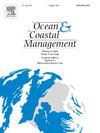基于基序的RCEP航运网络结构分析与弹性评估
IF 5.4
2区 环境科学与生态学
Q1 OCEANOGRAPHY
引用次数: 0
摘要
区域全面经济伙伴关系协定(RCEP)的签署进一步加强了亚太地区的海上贸易。然而,随着航运网络的日益复杂,突发事件发生时的级联效应风险日益突出。本研究基于基序分析和灾害传播理论,分析了RCEP航运网络的节点重要性和网络弹性。首先,本文提出了一种基于基序分析的节点重要性度量方法,解决了传统拓扑指标忽略节点结构协同效应的局限性。研究结果表明,通过基序结构分析确定的节点对网络的稳定性有较大的影响。在此基础上,提出了基于灾害扩散理论的级联故障模型,该模型集成了具有不同传输强度、恢复速率和时延效应的多源干扰。仿真分析有效地揭示了传输强度、恢复速率和时延效应对网络弹性的影响。本文章由计算机程序翻译,如有差异,请以英文原文为准。
Motif-based structural analysis and resilience assessment of the RCEP shipping network
The signing of the Regional Comprehensive Economic Partnership (RCEP) has further strengthened maritime trade in the Asia-Pacific region. However, with the increasing complexity of shipping networks, the risk of cascading effects in the event of emergencies has become more prominent. This study, based on motif analysis and the disaster spreading theory (DST), analyzes the node importance and network resilience of the RCEP shipping network. First, this study presents a node importance measure based on motif analysis, which addresses the limitation that traditional topology indicators ignore node structure synergies. The research results indicate that nodes identified through motif structure analysis have a stronger influence on the stability of the network. Furthermore, this paper proposes a cascading failure model based on disaster spreading theory, which integrates multiple sources of disturbances with differentiated transmission intensity, recovery rate, and time-delay effects. And the simulation analysis effectively reveals the impact of transmission intensity, recovery rate, and time-delay effects on network resilience.
求助全文
通过发布文献求助,成功后即可免费获取论文全文。
去求助
来源期刊

Ocean & Coastal Management
环境科学-海洋学
CiteScore
8.50
自引率
15.20%
发文量
321
审稿时长
60 days
期刊介绍:
Ocean & Coastal Management is the leading international journal dedicated to the study of all aspects of ocean and coastal management from the global to local levels.
We publish rigorously peer-reviewed manuscripts from all disciplines, and inter-/trans-disciplinary and co-designed research, but all submissions must make clear the relevance to management and/or governance issues relevant to the sustainable development and conservation of oceans and coasts.
Comparative studies (from sub-national to trans-national cases, and other management / policy arenas) are encouraged, as are studies that critically assess current management practices and governance approaches. Submissions involving robust analysis, development of theory, and improvement of management practice are especially welcome.
 求助内容:
求助内容: 应助结果提醒方式:
应助结果提醒方式:


